
Jonathan Monaghan grew up on the shores of the Atlantic in Rockaway Beach, Queens. Each morning, he awoke to a distant view of the New York City skyline, reduced to a circuit board of activity. It’s no wonder he developed a fascination with architecture — and technology’s effect on modern society. Today, Monaghan is an artist, animator, and sculptor based out of Washington, DC. We had the chance to sit down with Jonathan to discuss his current exhibition Disco Beast, on view at bitforms Gallery in New York and how he is using 3D printing to bring his animations to the physical world.

Disco Beast, 2016, Video still
What is the focus of your work?
As an artist, I maintain a wide-ranging practice including animated video installations, prints, and computer fabricated sculpture. All my work tries to personify underlying fears and anxieties we tend to have about the future and technology. To do this I re-interpret historical works of art, architecture, and ancient mythologies, combining them with elements from a modern commercial age in humorous or subversive ways.
Has your work been a way for you to overcome your own fears and anxieties about the technologies surrounding modern day life?
I think it is important that many artists are using these powerful creative technologies, like 3D printing and 3D animation. It gives artists a lot of power to tell their unique stories and express their perspectives. So when I see what amazing things artists are doing with technology, it certainly makes me less worried about the future.
“All my work tries to personify underlying fears and anxieties we tend to have about the future and technology.”
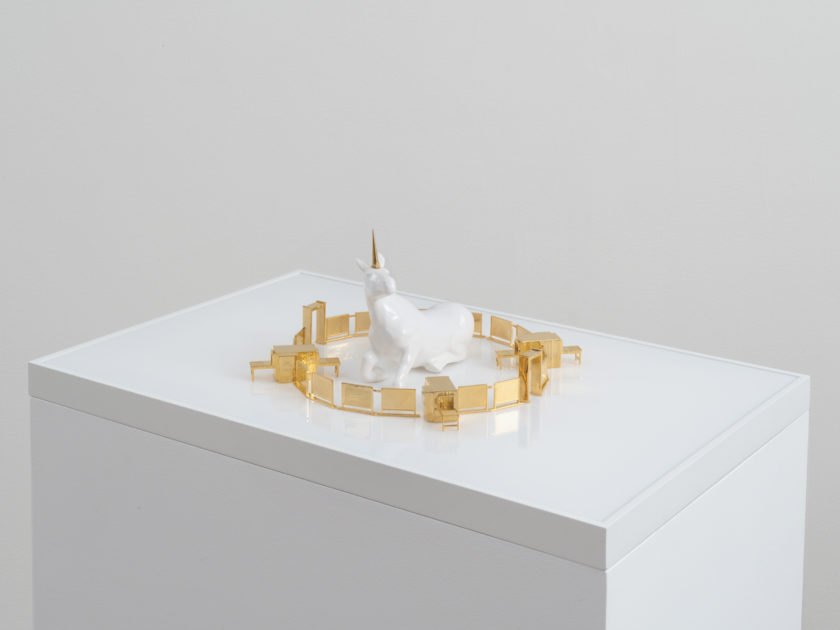
The Unicorn in Captivity, 2017
Which media do you use? Do these media lend themselves to your work’s focus?
I make 3D animated films using essentially the same processes and techniques used in a lot of mass-media entertainment. I am quite conscious of the seductive aesthetics used in commercial media, which I maintain in my work, but then with absurd imagery and disjointed narratives my films become more challenging or critical.
I like working with gold for similar reasons. Gold has always been representative of power and desire, and so by creating porcelain and gilt sculptures of airport security checkpoints or bikeshares, I try to challenge us to rethink how aristocracy and power operate today.
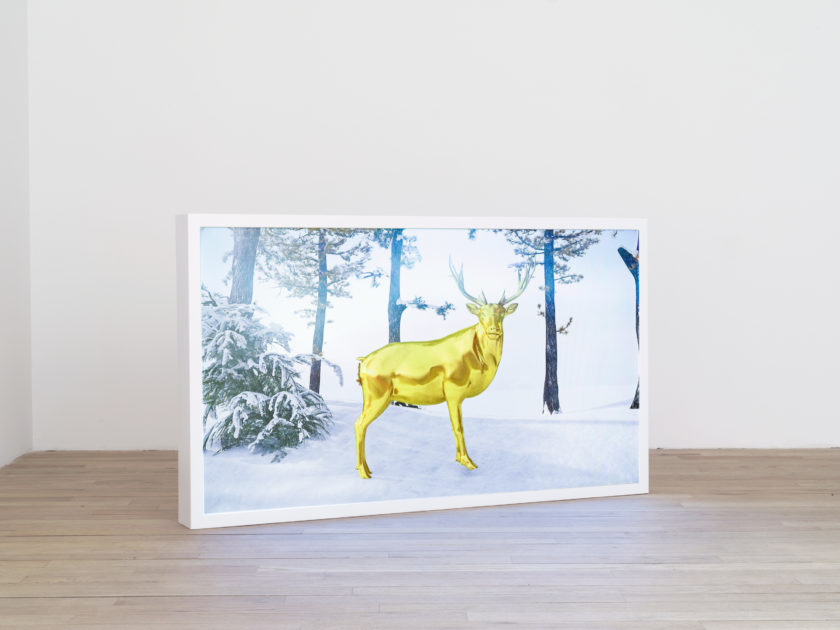
Escape Pod, 2015
Did one medium influence or develop the use of another medium?
All of my videos, prints, and sculptures originate in the virtual space of 3D software. With my different bodies of work, it is like a hermetic universe of imagery and symbols, which can manifest in different media. So imagery appearing in a video can emerge as a 3D printed sculpture.
“…by creating porcelain and gilt sculptures of airport security checkpoints or bikeshares, I try to challenge us to rethink how aristocracy and power operate today.”
What are you currently working on or thinking about?
I am always seeking new ways to push these creative technologies to make something that can’t be made any other way. I want to challenge people’s expectations and raise some critical awareness about how technology affects us.

You’ll Like it Here, 2017
Can you tell us about your current exhibition, Disco Beast, at Bitforms Gallery in New York City?
Disco Beast is a solo exhibition featuring new sculptural, video, and print works. The works in the show draw on a range of aesthetic references, such as surveillance technology and historical artworks.
“By mixing 3D prints and 3D renderings, I am trying to blur the boundary between the virtual and the real.”
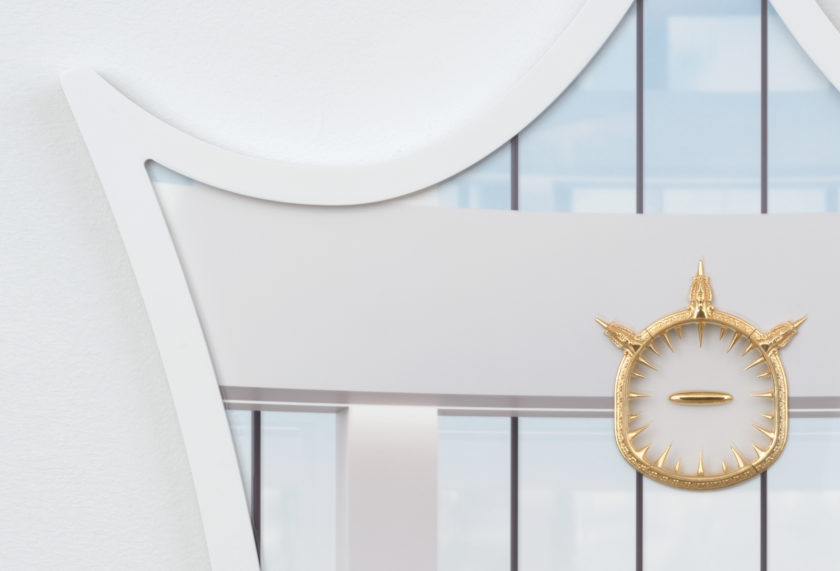
You’ll Like it Here detail
There is a series of work entitled Police State Condo, which are like sculptural reliefs; there are 3D printed parts mixed in with flat images rendered using 3D software. With a photographic realism, the works depict completely imagined spaces which seem like a chic luxury condo or a high-end corporate lobby, but have more ominous elements, like security checkpoints and surveillance cameras. By mixing 3D prints and 3D renderings, I am trying to blur the boundary between the virtual and the real.
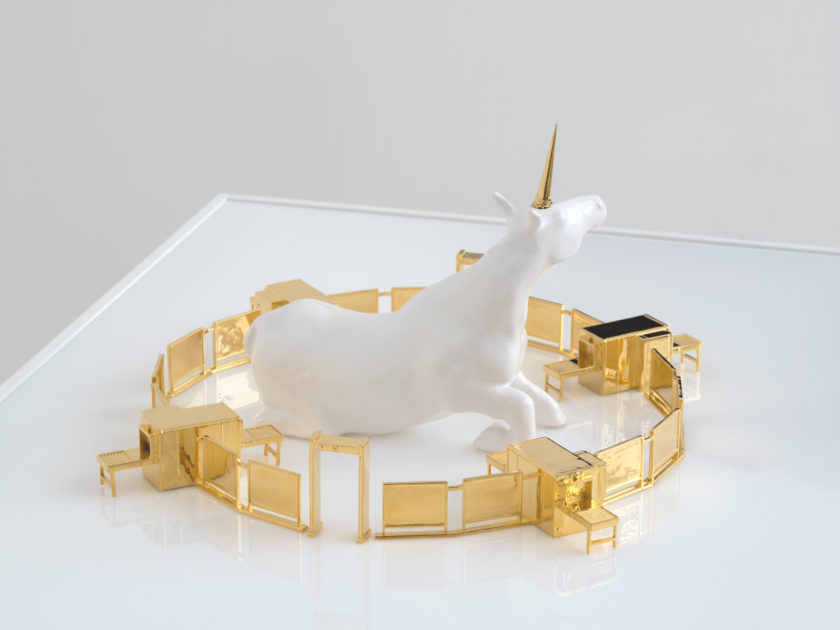
The Unicorn in Captivity, 2017
There are also sculptures. The Unicorn in Captivity references the iconic tapestry of a fenced-in unicorn. Produced in 3d printed porcelain and 3d printed gold plated brass, a unicorn is enclosed in an airport security checkpoint. As the Metropolitan Museum of Art states about its piece: “The unicorn could escape if he wished but clearly his confinement is a happy one….” I thought this was a relevant metaphor for our apparent comfortable relationship to technology and the increasing security state.
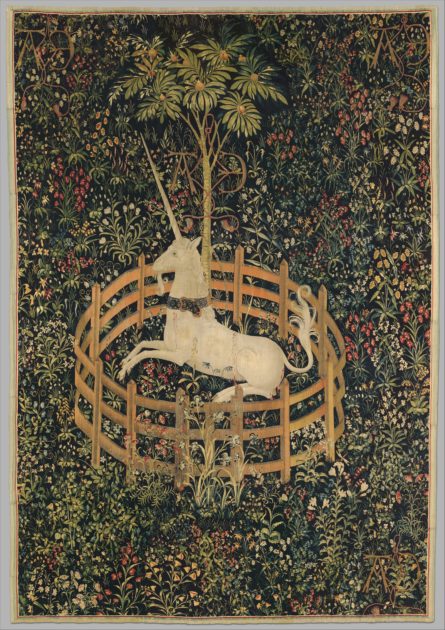
The Unicorn in Captivity (from the Unicorn Tapestries), 1495–1505 (Collection of the Metropolitan Museum of Art)
“The unicorn could escape if he wished but clearly his confinement is a happy one….”
Monaghan’s exhibition Disco Beast is on view at the Bitforms Gallery in New York City through December 10. bitforms gallery was founded in 2001 and was a pioneering space in that it represented artists working in digital, internet, time-based, and new media art forms.
You can also find Monaghan’s work at the The Walters Art Museum in Baltimore in his solo exhibition entitled After Faberge. Monaghan’s work will be on view until June 24, 2018.
For more on Jonathan Monaghan, visit his website and Instagram @jonmonaghan
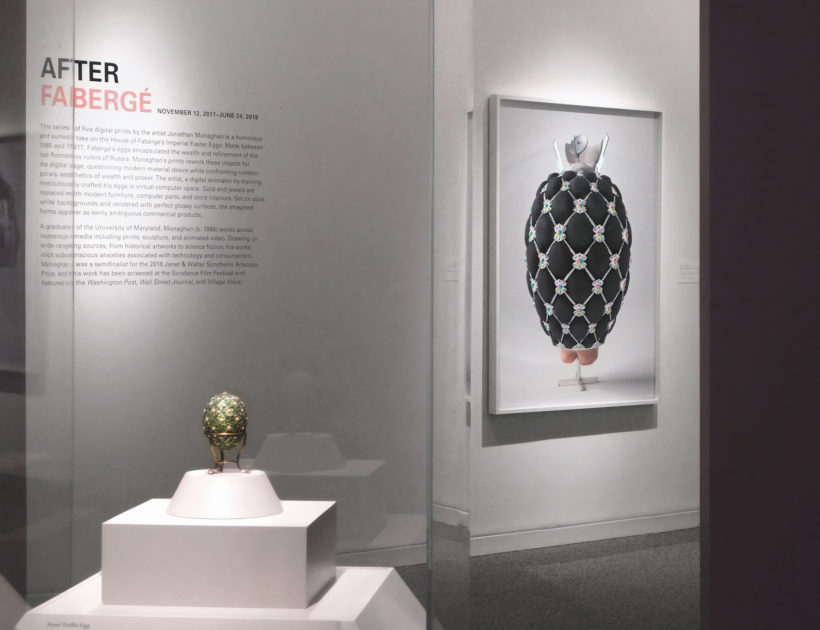
After Faberge, 2015


